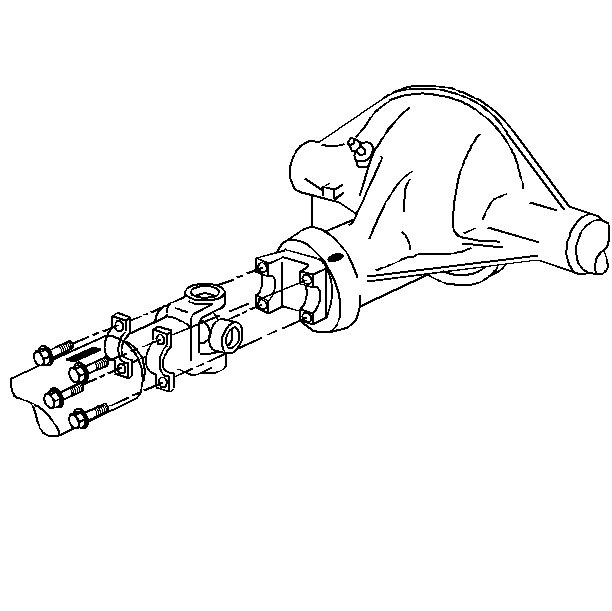Removal Procedure
- Raise and suitably support the vehicle. Refer to Lifting and Jacking the Vehicle in General Information.
- Accurately reference mark the propeller shaft.
- Remove the clamp bolts from the rear of the pinion flange.
- Remove the propeller shaft from the rear axle flange by sliding forward.
- Tape the bearing cups in order to prevent the loss of bearing rollers.
- Remove the propeller shaft by using the following procedure:
- Clean all the parts using a suitable solvent.
- Inspect the outer diameter of the nylon injected yoke for burrs. Burring damages the transmission seal.
- Inspect for proper installation and uniform seating of the bearing cups.
- Inspect the slip yoke splines for damage. Replace the parts as necessary.

Important: Observe the position of all the driveline components. Accurately mark the relationship of the components before removal. These components include the propeller shafts, the drive axles, the pinion flanges, and the output shafts. Reassemble all components in the exact relationship to each other as they were before removal. Follow the specifications, the torque values, and any measurements that were obtained prior to disassembly.
Notice: When removing the propeller shaft, do not attempt to remove the shaft by pounding on the yoke ears or using a tool between the yoke and the universal joint. If the propeller shaft is removed by using such means, the injection joints may fracture and lead to premature failure of the joint.
Important: Do not allow the universal joint to incline greatly; the joint may fracture.
| 6.1. | Lower the rear of propeller shaft. |
| 6.2. | Gently pull the shaft from the transmission. |
Installation Procedure
- Slide the propeller shaft into the transmission.
- Lubricate the slip joint.
- Install the yoke to the pinion flange.
- Align the reference marks on the pinion flange and the propeller shaft rear yoke. Seat the yoke properly.
- Install the retainers.
- Install the rear pinion flange bolts into the pinion flange.

Important: Install a new universal joint whenever a slip joint or companion flange is serviced.
Notice: Use the correct fastener in the correct location. Replacement fasteners must be the correct part number for that application. Fasteners requiring replacement or fasteners requiring the use of thread locking compound or sealant are identified in the service procedure. Do not use paints, lubricants, or corrosion inhibitors on fasteners or fastener joint surfaces unless specified. These coatings affect fastener torque and joint clamping force and may damage the fastener. Use the correct tightening sequence and specifications when installing fasteners in order to avoid damage to parts and systems.
Tighten
| • | Tighten the rear pinion flange bolts to 20 N·m (15 lb ft) for 2.2L engines. |
| • | Tighten the rear pinion flange bolts to 45 N·m (33 lb ft) for 4.3L engines. |
